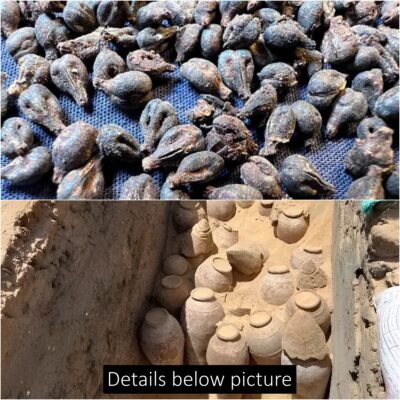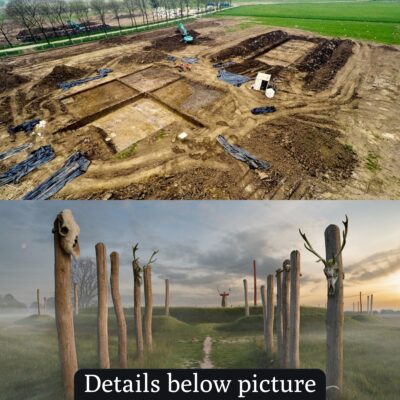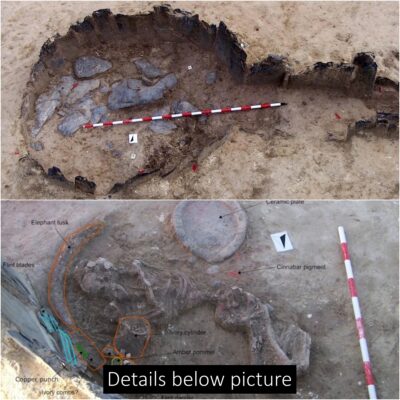More than 100,000 Chinese artefacts, mainly Ming ceramics, from two ships wrecked 500 years ago have been discovered at a depth of 1.5km in the South China Sea – marking the first time China has found deep wrecks on such a scale.
Some of the pottery lying on Wreck No 1 about 1.5km deep (National Cultural Heritage Administration)
The shipwrecks, designated No 1 and No 2, were found at two sites 20km apart on the north-west continental slope off Sanya on Hainan island. No 1 contains the large numbers of ceramics, piled in places 3m deep above the vessel, while the slightly earlier No 2 appears to have been dedicated mainly to importing timber.
The discoveries were announced on 21 May by archaeologists from China’s National Cultural Heritage Administration (NCHA). The sites had been found by a team from the Chinese Academy of Sciences’ Institute of Deep-Sea Science & Engineering (IDSSE) last October, and research is now being conducted by some 30 experts from there as well as from the NCHA’s National Centre for Archaeology and the Museum of the South China Sea.

.
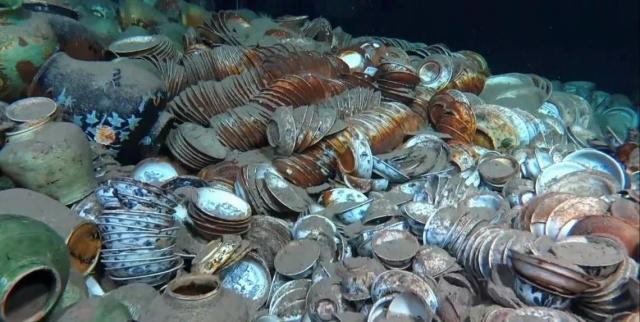
A wide assortment of Ming-era ceramics (NCHA)
No 1 wreck is reckoned to lie scattered over a 10,000sq m area. Though the cargo is visible most of the ship is thought to remain buried in sand, awaiting excavation. Analysis of recovered samples indicates that the cargo was being exported and dates to the time of the 11th ruler of the Ming Dynasty, Emperor Zhengde (1506-21).
Blue-and-white porcelain, pieces of celadon pottery, green glazed and other styles of ceramics found at the site originated at two manufacturing centres, in Jingdezhen and Longquan.
Shipwreck No 2 has been dated to the reign of Zhengde’s father Emperor Hongzhi (1488-1505). The number of ceramics on board is far smaller but large numbers of preserved timber logs were found lying at the site.
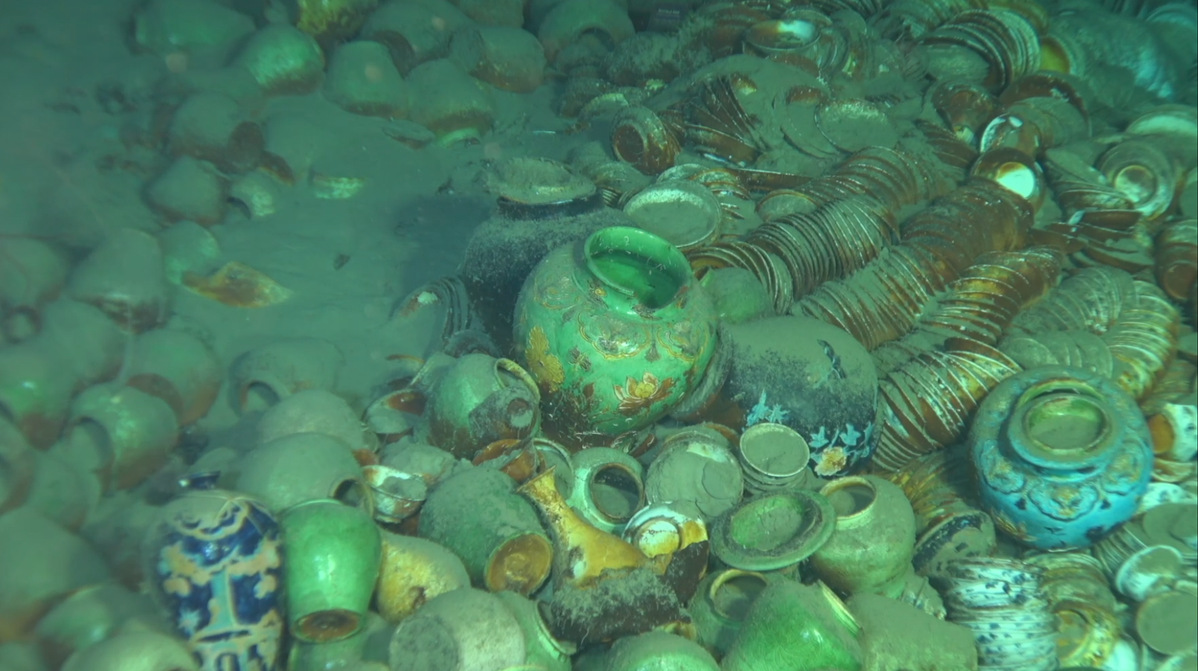
.

Timber logs on wreck No 2 (NCHA)
A series of 50 manned submersible dives is planned at the sites over the next 12 months, carried out using the Shenhai Yongshi (Deep Sea Warrior) and Fendouzhe (Striver) vehicles from the scientific research vessels Tansuo 1 and Tansuo 2. Once the surveys are complete an excavation and conservation programme is to be planned for the two wrecks.
“The findings are key evidence of the ancient Maritime Silk Road, and a major breakthrough for historical study in Chinese overseas trade, navigation and porcelain,” said NCHA director Yan Yalin. “China will promote international co-operation in protecting underwater cultural relics and share its experiences.”
Discovery of both inbound and outbound ships in the same area “demonstrates the significance of the route”, added NCA director Tang Wei. “It helps us study the Maritime Silk Road’s reciprocal flow.”
Deepwater archaeological exploration of deep Chinese waters is said by China Daily to have been a recent initiative, with the NCA and IDSSE together setting up a dedicated laboratory in 2018. They were rewarded when they found artefacts, including coins, dating from the Tang Dynasty (618-907) at depths beyond 2km near the Paracel Islands, a disputed area of the South China Sea.
